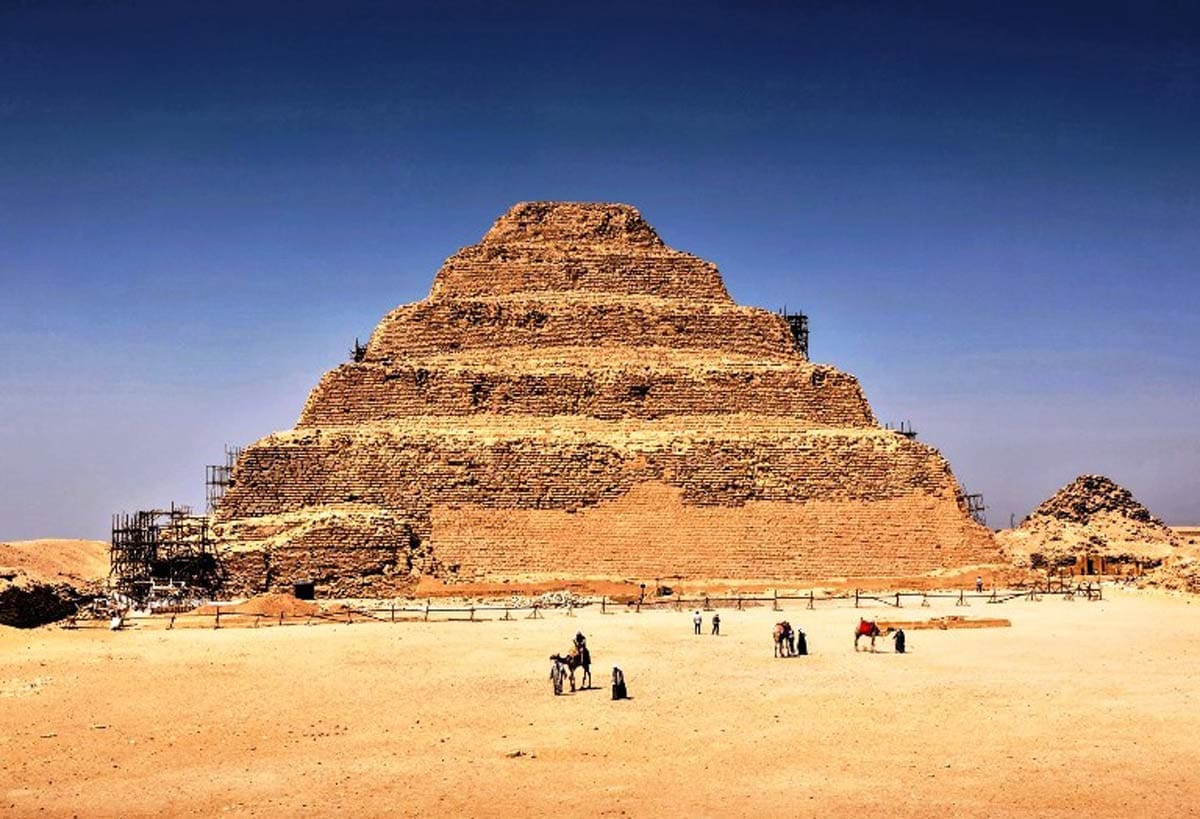
I’m in Cairo, Egypt on a hotel balcony overlooking the Nile River, a fantasy land I’ve heard about my whole life ― and I’m here. I needed to take a minute and revel in that.
Then, I need to recognize that thanks to Overseas Adventure Travel’s (OAT) Ancient Egypt and the Nile River Tour, I was about to begin a magical journey through 6,000 years of history. And then accept the hard truth.
How do you recapture 6,000 years of history in 1,200 words, the social media-inspired limited attention span requirement that travel editors now impose on their writers? Usually, my articles weave a story; this one’s not going to. I think all I can do is let you experience a little bit of Egypt the way I did.
The first introduction: the Egyptian Museum, to hint at the iconic sites yet to come with their incredible stories and fascinating history whose importance to the people who live in the country where they’re located as well as the world is astounding. Over 150,000 artifacts tell the entire 6,000-year-old history of Egypt ― so many stories, sculptures and statues.
Ironically, the one I remember most is that of the Pharaoh Khufu who built the Great Pyramid, the largest stone structure in the world. His commemorative statue is only 3 inches high. I couldn’t help but feel he wouldn’t be very happy about that.
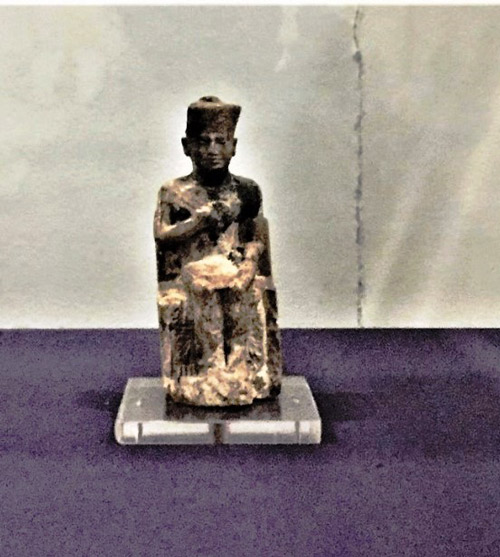
It’s Virtually Impossible to Wrap One’s Head Around Egypt’s 6,000 Years of History
But ah, the piece de resistance ― I don’t know how to say that in Egyptian ― is all about King Tut, Tutankhamun, who ruled from the age of 9-19 from 1332-1323 B.C.E. and was its most famous ruler (apologies to Ramses II, but more on him later), only because his tomb was the only one ever to be found intact when it was discovered in 1922. Because all the others had long been subjected to robbery and desecration (more on that later, too), King Tut’s tomb is considered the most spectacular discovery in the history of archaeology.
His mummy lay in quiet repose, not really surprising for a mummy, many others of which we saw in the much newer Museum of Egyptian Civilization. Egyptians sought to preserve the bodies of the dead so that the soul could inhabit them for eternity. 6,000 years seems close enough.
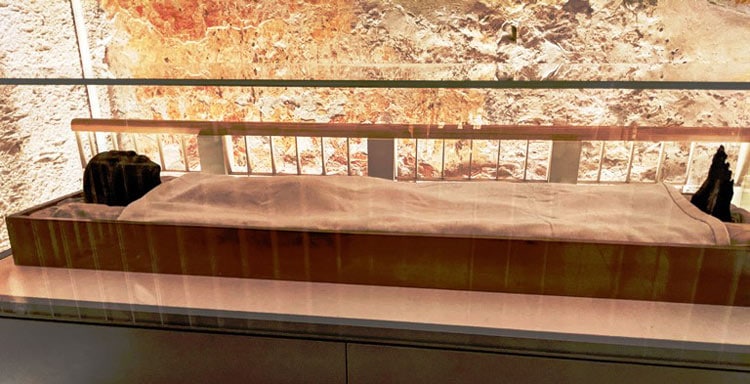
Among the artifacts of King Tut, numbering about 5,000, are gold coffins, furnishings, gold jewelry of all sorts adorning fingers and toes, elaborate necklaces and headpieces ― and I thought my 13-year-old grandson was spoiled.
Time to go beyond the academic remnants of ancient Egyptian society to the actual tombs, crypts, statues and pyramids that belie belief and challenge the imagination.
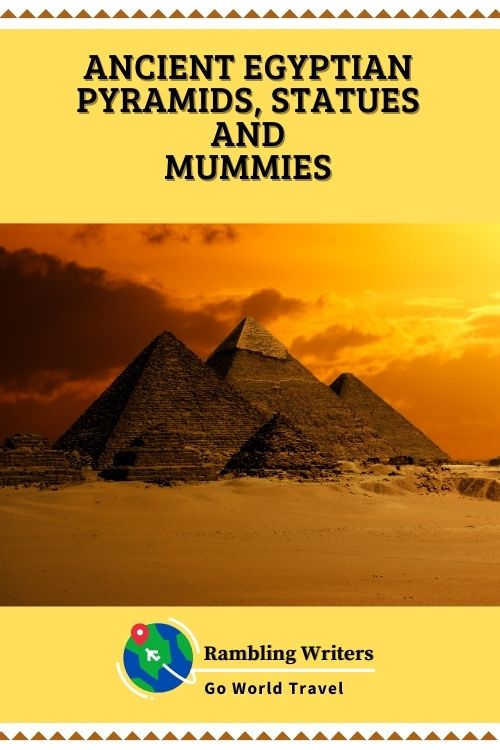
Amid miles of monochromatic monotony lies Sakkara, a sprawling complex of temples, pyramids and crypts. The largest of the many tombs is the Step Pyramid of King Zoser, the first pyramid to ever be built in 2650 B.C.E. and remains the oldest stone structure in the world.
Although the excavation of ancient sites began in the early 1800s, they still continue to this day with new archaeological discoveries being made all over Egypt.
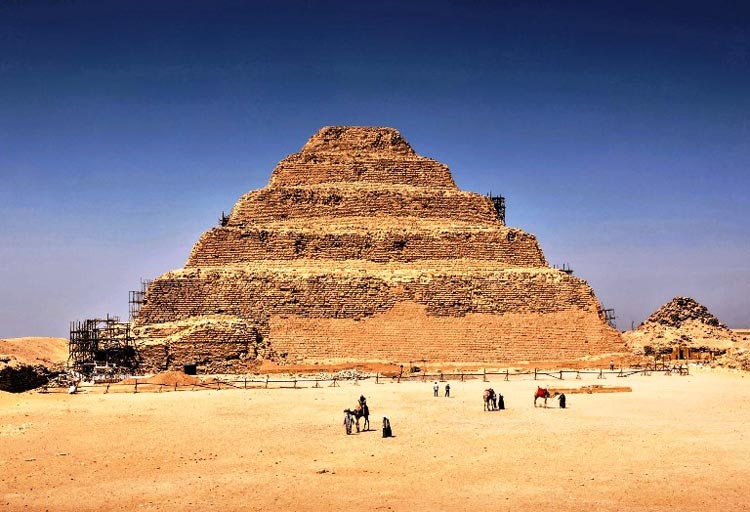
The Step Pyramid in Sakkara, Egypt, was the first pyramid to ever be built in 2650 B.C.E. and remains the oldest stone structure in the world. Photo by Witthayap/Dreamstime
The statue of Ramses II in Memphis, dating back 3,200 years, is also of intimidating size, about 36 feet tall, and that’s without his legs. Egyptian antiquity is by definition big, overwhelming, powerful and very old. Ramses, Egypt’s longest reigning pharaoh and his most prolific builders of temples, served for 67 years. More impressive though, I thought, were his 55 wives and 115 children.
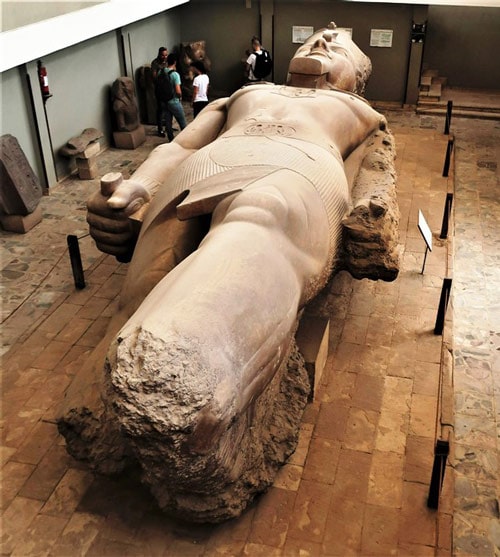
The Valley of the Kings, located outside Luxor, literally takes you deeper into the tombs of the most famous of Egypt’s rulers. So, no surprise, eventually the original tombs were ransacked. Stressed-out pharaohs later decided to build their own tombs in this protected area where the new tombs were chiseled deep into the sides of desolate cliffs on the Nile’s west bank.
Success followed and because they’ve been sealed for so long, Tutankhamun’s tomb was discovered here, the walls have retained colors so vibrant as to look freshly painted and deeply etched carvings depicted in hieroglyphic symbols describing the journey to the afterlife are still visible as if recently crafted.
Fortunately, our guide, Hussien, spoke fluent hieroglyphics and could read the walls like a storybook. Thus we learned of the royal lives of the kings and everyday lives of the villagers from 5,000 years ago, and our country boasts of the historic lives of the colonists who lived 250 years ago in Williamsburg. Perspective, anyone?
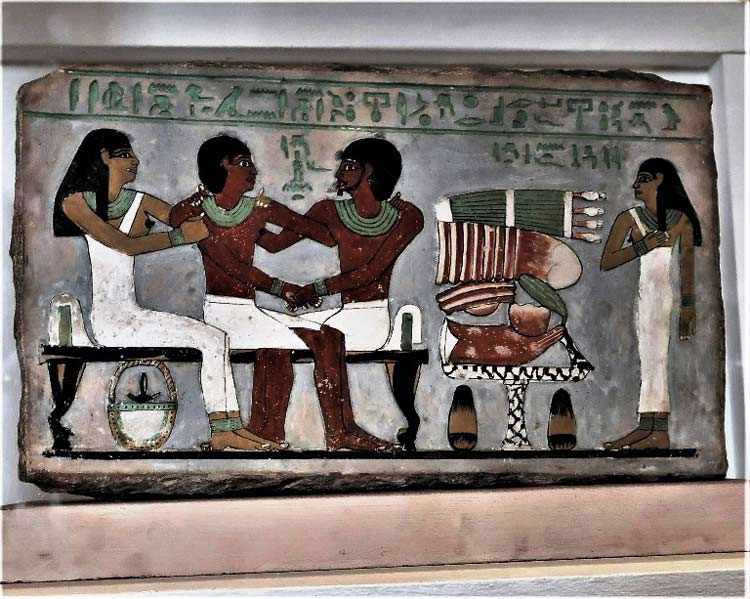
Colorful Paintings and Hieroglyphic Etchings Reveal Egyptian History in Their Many Tombs
Pyramid. An elusive image. Concept. Visual. Always a fanciful figment far away and so long ago, but nothing I could personally relate to.
Until now, when I was actually standing on one of the huge boulders of which it was made. The fact that it was even made of huge boulders seemingly randomly thrown together was nothing I could have imagined before.
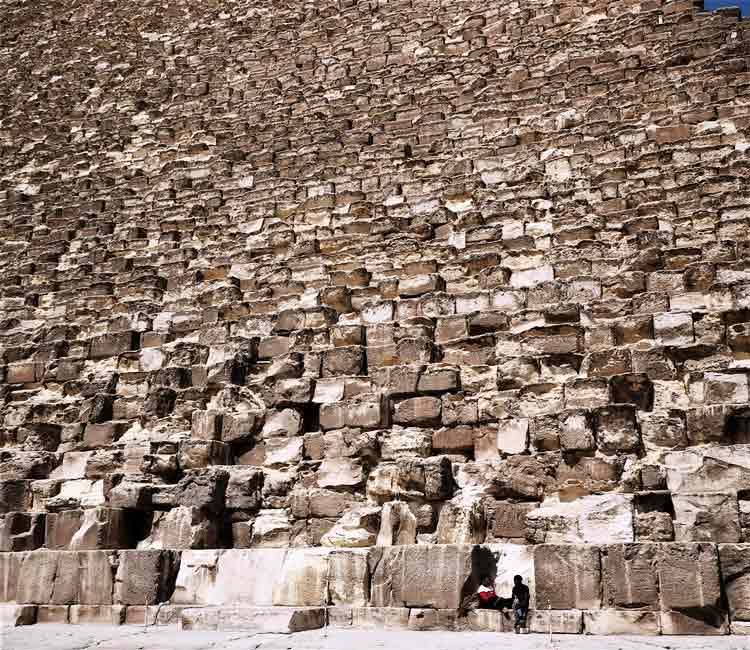
Mountains moved and reshaped to the ego of one person, depleting the physical and economic resources of the current city to ensure the pharaoh’s safe journey into his next along with all the accouterments ― jewelry, foodstuffs, furniture, chariots, weapons ― he has acquired.
The Pyramids of Giza pretty much define Egypt. No matter what else you see, all of which will be astounding, this probably will be where’s your mind’s eye returns whenever you look back on the trip.
The Great Pyramid, at 480 feet tall and built more than 4,500 years ago, is the last of the Seven Ancient Wonders of the World to still stand. Again, the colors embedded in the greater-than-life-size paintings of male figures seemingly shine.
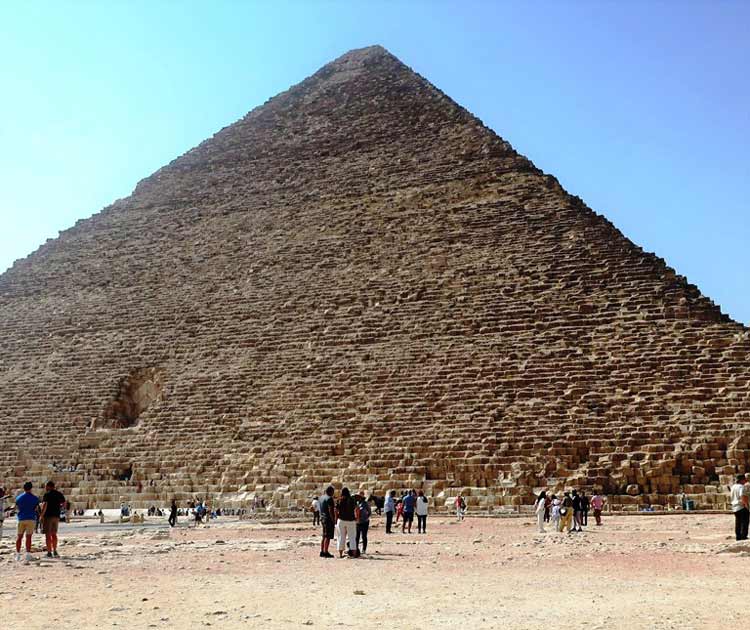
I could literally see each of the 2-3 million huge boulders placed round the clock over a 20-year span and could imagine the 10,000 workers sweating and panting from strain to create this monstrous edifice in honor of the pharaoh Khufu. Did I mention the stones were brought in from limestone quarries 20 miles away?
From afar, the surface of the pyramid looks smooth. As you get closer, you can see the enormity of each stone, several feet in diameter, randomly placed beside and atop the other. As I climbed newly embedded stairs onto the pyramid itself, I wondered if Khufu would take offense.
There are two other pyramids of note ― from the 124 that once occupied the valley ― but the Great Pyramid is what dazzled me. I might add that looking at the pyramids from atop a camel added a whole new level of authenticity not usually associated with standard sightseeing options.
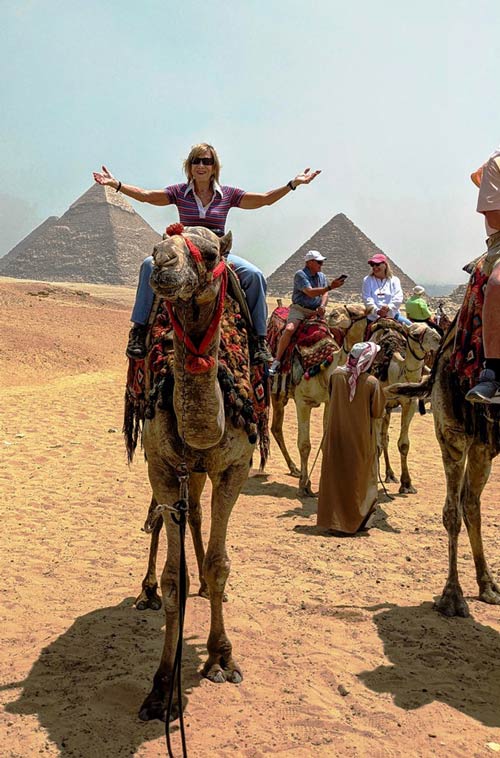
The Pyramids of Giza, Egypt and the Adjacent Sphinx Do Not Disappoint
I was pretty sure I wasn’t going to be impressed by the size of anything else anytime soon. And then we came to the Sphinx ― the inscrutable and mysterious Sphinx, equally as old, carved from almost one piece of limestone, seemingly part of the mountain itself. The head of a man and the body of a lion represents the combination of intelligence and strength attributed to the pharaohs.
“Take some time to revel in the history embedded in every block of stone and the incomprehensible size of each structure standing tall in the desert sand,” admonished Hussien.
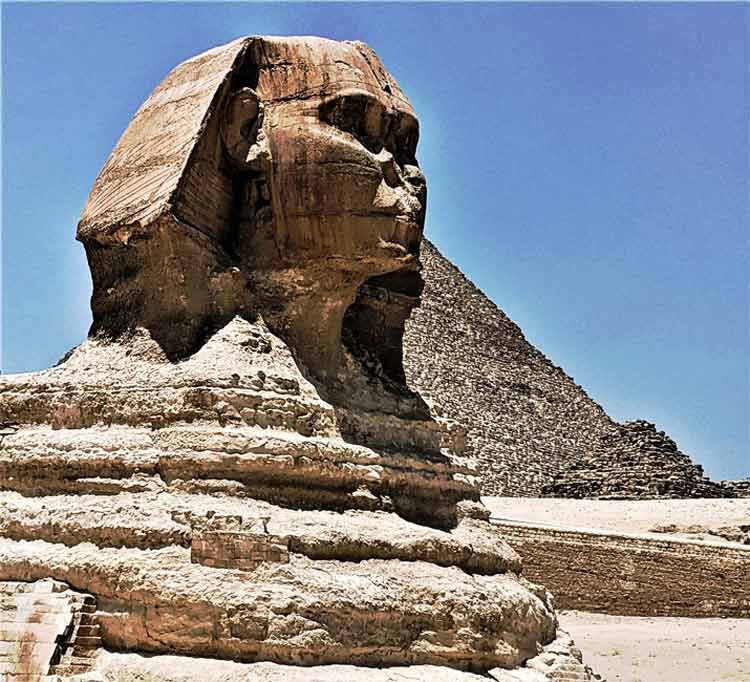
And there’s a Cliff Notes edition of my Egyptian tour. Though indeed, the tour took a deeper dive into other famous temple complexes as well as a much-deserved emphasis on Egyptian lifestyle and culture.
Still, archaeologists in Egypt just announced in mid-May that they had uncovered another trove of ancient artifacts at the necropolis of Sakkara, including mummies and bronze statues dating back 2,500 years.
Didn’t I tell you they were still discovering stuff?
I suspect this itinerary is similar to that of other tour groups but that’s where the comparison ends. OAT is totally unlike other tour groups, which will be the subject of my next 1,200-word article.
If You Go
For more information, visit Overseas Adventure Travel online.
- Broward County, Florida: When the Winter Sun Hides Behind a Cloud - April 16, 2024
- Nature is Neat in Broward County, Florida - April 1, 2024
- Margaritaville: A Time-Honored Memorial to Jimmy Buffett - March 15, 2024

